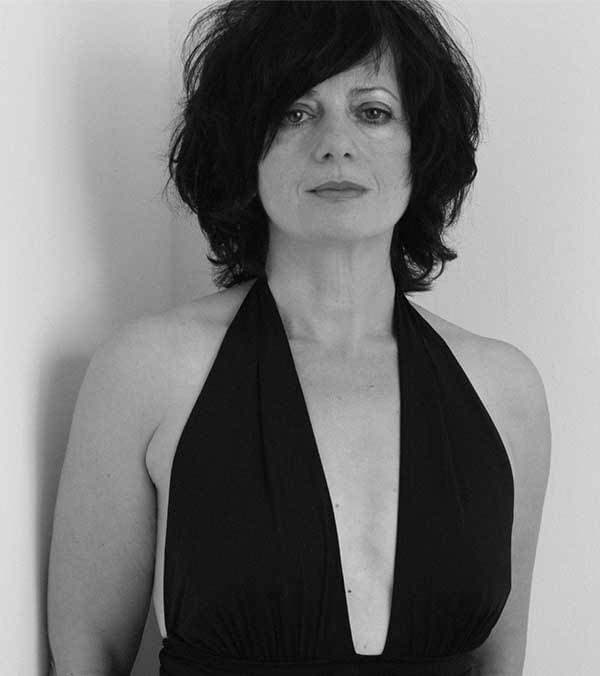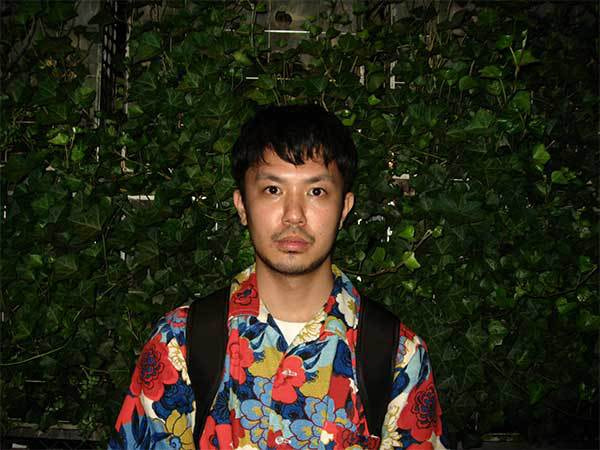クィア・キャリアー:重複と反復
クィア・キャリアー:重複と反復
作家:アナ・ローラ・アラエズ
[スペイン]
Queer carriers: the double and the repetition
Author:Ana Laura Aláez
[Spain]
Author: Ana Laura Aláez
Tokyo
Butoh dancer: Norihito Ishii
Performers: Kurasaki Aki, Shen Ye Zhen
Biker: Asuka Akiyama
Assistant and production coordinator: Helena Gallardo
Camera assistant: Kentaro Yamada
Camera and production coordinator: Daniel Gerhard Holc
Towada City
Performer: Sayaka Mitome
Camera: Ana Laura Aláez
Assistant: Helena Gallardo
New York City:
Performers: Lola Jiblazee,Hop Nguyen Le Bach,Yess Giron
Camera: Marco Castro
Production Coordinator: Dimitrios Poppis
Skater:Jessica Bailey
Camera: Dennis Williford
Production coordinator: Daniel Gerhard Holc
Bilbao:
Performer: Amparo Badiola
Assistant: Susana Talayero
Camera assistant: Ander Sagastiberri
Camera: Ana Laura Aláez
Mallorca:
Performer: Magdalena Planas
Camera: Daniel Gerhard Holc
Music: “Stillstand” Written and performed by Ascii.disko
Video Edited by: Ana Laura Aláez and Daniel Gerhard Holc

アナ・ローラ・アラエズ
バスク出身。現在スペインで最も注目される現代美術家の一人。2001年の第49回ヴェネチア・ビエンナーレ、スペイン館に作品を提供。彼女の初期作品は前世代の「新バスク彫刻」提唱者たちの主張の発展を示すとみなされ、さらには創作過程を重要視と従来彫刻の材料とみなされてこなかった映像や音楽を採用することで、従来の理論にジェンダー的観点を取り入れ補った。
Ana Laura Aláez
From the Basque country, is one of the most recognised Spanish contemporary artist. She was invited to contribute to the Spanish Pavilion at the 49th Venice Biennale, 2001. Her early works denote a gradual assimilation of the questions explored by the previous generation, the exponents of “New Basque Sculpture”, but they also introduced corrective elements related to gender perspective by using process-based strategies and materials not traditionally considered sculptural like videos and music.
ダンス映画監督たちへのメールインタビュー
インタビュアー・翻訳:黒田瑞仁
Q
あのエレクトロニックな音楽と共に、街中で歩き続ける人々を眺めていると、自分も街に繰り出したくてたまらなくなります。沢山聞きたいことはありますが、まずはこの音楽のことを教えてください。なぜこの曲を流していますか。どういう意味の曲なのでしょうか。日本の観客とシェアするために歌詞も送っていただけますか。
A:アナ・ローラ・アラエズ
『クィア・キャリアー:重複と反復』で、私は倣うべきものとして与えられた幾つもの女性性の中に潜む反抗の度合いを、映像表象と音楽表象を並べることで追求を試みました。この映像はドイツのミュージシャンのダニエル・ホルク/アスキーディスコ(Ascii.Disko.)と共同で創作した、一つの楽曲が下敷きになっています。映像を先に製作し、後から音楽を作ったのでこれはいわば逆ミュージック・ビデオと呼べるかもしれません。曲中で繰り返される「I can't get away from myself. (自分から逃れられない)」というフレーズは、脚本のような役割を果たしました。主だった構成として、全体は創作過程で生まれた複数のパフォーマンスが合わさった、幾つかのチャプターから成っています。終わりを持たない短編映画として、これは同時に複数のものでありえます。ドローイング、ダンス・パフォーマンス、アート・パフォーマンス、ミュージック・ビデオ、ビジュアル・ダイアリー。重要なのはどの登場人物も二分法に当てはまるアイデンティティを持ち合わせず、むしろそれが移ろい続けているということです。誰もが現代の創造主なのです。つまりあの人たちは何度自分の組み立てを失敗したとしても、自分だけの表現を探し続ける人々なのです。
歌の歌詞:
走っている/走っている/走れるだけ速く/走れるだけ速く走っている/走っている/でも遠くへはいけない/逃げきれない自分から逃れられない/自分から逃げられない/運転する/できるだけ速く/でも逃れられない/逃げきれない
自分から逃げられない/自分から逃げられない/
自分から逃げられない/自分から逃げられない/走っている/運転している/ 地球が回り続ける
でも自分から逃れられない/自分から逃れられない / 走っている/走っている/世界は回り続ける/
でも逃れられない/逃れられない/逃れられない
Q
歌詞に「I can't get away from myself. (自分から逃れられない)」とありますが、映像に移っている人たちと彼らが歩いてる街の風景は彼らのアイデンティティと密接に絡んでいるように見えます。それから、日本ではまだクィアという言葉は広く知られていません。彼らは自らをクィアを称する人々でしょうか?それとも、作家の視線から感じたクィア?あなたが作品の中で提示したアイデンティティ、クィアについて教えてください。
A:アナ・ローラ・アラエズ
幼い頃から、私は「普通」という言葉に納得できませんでした。なぜなら<身振り、活気、他人とのコミュニケーションを取る方法、以下略>は動作の集合でしかないからです。社会にある多くの問題は「お前は他人と違う」といった決めつけから来ています。特に女性であれば尚更です。作中の「クイア」というコンセプトはただセクシャルな分類だけでなく、規範的な男性性や女性性を積極的かつ創造的にぼかすことができます。私の芸術的な態度は彫刻に近いため、この映像は動く彫刻として理解することができかもしれません。作中の人物たちは、すぐには見てとれないかもしれませんが何か3次元の物の運び手なのです。これは閉じられた観念の話ではありません。観念を開き、多義性を探って行くことで私たちが何をしていたとしても、前に進み続けるための方法です。例えば、私はあなたがたが私の映像をダンス映画祭にセレクトしていただけたことを喜ばしく思っています。なぜなら、あなた方のダンスの定義もまた「普通」の先を行っているということだからです。
A Mail Questionnair to Dance Film Directors
Interviewer : Mizuhito Kuroda
Q
Watching those people walking in the streets along with electronic music makes me want to set out to town. I have many questions, but first, please explain about the music. What does this music represent, and what does it mean? To share with the Japanese audience, please send me the lyrics too.
A:Ana Laura Aláez
-With Portadoras queer: el doble y la repetición, I try to explore the degrees of rebelliousness in a given representation of plural femaleness via the use of image repetition in parallel with musical repetition. The video is based on a specific track produced in partnership with the electronic music project of the German musician Daniel Holc / Ascii.Disko. We could say it is a music video upside down with the image done first and the music produced afterwards. The refrain “I can’t get away from myself” is like the script. The main structure comprise various chapters with severals performances and narratives that arise in the making. A non ending short film that could be everything at the same time: a drawing, dance performance, art performance, music video, a visual diary. The most important is that all the characters are carriers of no binary identities in perpetual motion. Each one is like a contemporary demiurge: in search of a personal form of expression no matters how many times they fall down constructing themselves.
Lyrics of the song:
I can ́t get away from myself / I can ́t get away from myself/And I keep running / running / And the world keeps turning / And I keep running
I ́m running / I ́m running / I ́m running as fast as I can / I ́m running as fast as I can / I ́m running / I ́m running / But I can ́t get away / I can ́t run away/I can ́t get away from myself / I can ́t run away from myself / I ́m riding /I ́m riding as fast as I can / But I can ́t run away / I can ́t get away/
I can ́t run away from myself / I can ́t run away from myself /I can ́t run away from myself / I can ́t run away from myself /And I ́m running / And I ́m riding / The earth keeps spinning / But I can ́t get away from myself / I can ́t get away from myself / I ́m running / I ́m running /The world keeps turning /
But I can ́t get away / I can ́t get away / I can ́t get away /I can ́t get away from myself / I can ́t get away from myself/And I keep running / running / And the world keeps turning / And I keep running
Q
As the song goes, "I can't get away from myself" I could see the people's identity in the film intertwined with the cityscape they are walking in. Also, the word and the idea of "queer" are not widely recognised in Japan yet. Are they people who call themselves queer? Or are they "queer" in a different context, for example, in this film? Please tell us about how you handled identity and queerness in your work?
A:Ana Laura Aláez
Since I was very young, I didn´t understand the word “normal” because I think everything (body language, vital attitude, how we communicate with the others, etc, etc) is a construction in motion. A lot of society’s problems comes with the stigma of “you are different”. Specially if you are a woman. The concept “queer“ in the video is not only about a sexual concept it is also a positive creative way of blurring masculine and feminine normative borders. I think the art discipline that defines me more is sculpture and I could say that this video is somehow a sculpture in motion. The persons in the video are carriers of the tridimensional things that we don’t see at the first sight. It´s not about closed concepts, it´s about opening them and explores other meanings that helps us to keep on, whatever we do. For example, I´m very glad that you´ve selected my video for a dance festival, because that means that your concept of what is dance is also beyond “normal“.
見続ける涯に火が!
監督:宮﨑 輝
[日本(横浜)2021]
The fire at the end of stare
Director:Hikaru Miyazaki
[Japan 2021]
出演/振付 鈴木望生 明日香 中川ゆかり 佐藤岳
監督 宮﨑輝
撮影 丸山桂 髙橋裕美
録音 佐藤大悟
監督補 國金英嗣
制作 鈴木順也
台詞 宮﨑輝
音楽 田所美穂(イタチプロ) 西村優輝(イタチプロ)
編集 宮﨑輝 國金英嗣
製作協力 シネマ・ジャック&ベティ

宮﨑 輝
山口県出身。横浜国立大学教育人間科学部人間文化課程在籍時に映画の制作を始める。2019年に映画美学校フィクションコースを修了し、以降劇映画の監督や助監督として映画制作を行う。2020年から演劇カンパニー・オフィスマウンテンに加入。演劇作品の出演および記録映像の撮影や編集も並行して行うようになる。現在はこの映画の舞台となった黄金町の映画館シネマ・ジャック&ベティで働いている。次回作はオフィスマウンテンの演劇『体操させ、られ。してやられ』(2021年12月横浜にて公演)への出演。
Hikaru Miyazaki
Film director. Actor. I enrolled in THE FILM SCHOOL OF TOKYO in 2017 to learn about film directing. In 2020, I joined the members of the theater company "Office Mountain" and started acting. I am currently working as a staff member at Cinema Jack & Betty, a cinema in Kogane-chou, the town featured in the film.
ダンス映画監督たちへのメールインタビュー
インタビュアー・翻訳:黒田瑞仁
Q
この作品の声と身体が切り離された表現は、人形浄瑠璃を連想させます。しかし人形浄瑠璃にはない映像的な効果が施され、さらに違った身体性が現れています。あなたはこの身体性をどう名付けますか。その理由も教えてください。
A:宮﨑 輝
俳優は台詞を発話せず、外部から台詞が聞こえてくるという方法をとるにあたって、俳優たちと話していたのは、どのようにして身体だけで「見ていられる無言」を作り出すかということでした。
俳優がテキストを覚えてそれぞれに振付を考えてもらう。その振付は言葉と密接した動きに変換されているものもあれば、俳優個々人の読みや想像によって言葉から距離を取った動きもあります(編集で身体と言葉をズラしている箇所も多くあります)。
それらの振付を組み合わせた身体が「見ていられる無言」であるかどうかの判断の根拠となるのはいつも映像に映った身体でした。稽古前半はオンラインで行ったのでZoomの画面上に映る身体、後半の対面稽古もカメラを構え、そこに映った身体を見ていました。生身の身体ではなく、あくまでモニター上に映った身体を作品の出発点として考えるということです。
その点が演劇やダンスの記録とは異なる身体性をこの映画が持っている理由だと考えます。演劇やダンスはカメラの存在を前提としません。対してこの映画は、自身の身体がカメラのセンサーによってデジタル信号に変換され、レイヤーしか存在しない平面的な身体=映像へと変わってしまうという事態が、個々人の振付に強く介入しています。それは生身の身体を素材として作品の全体を立ち上げることとは全く異なる作業です。
Q
かつて違法風俗店が立ち並んだ横浜の黄金町の映画館で撮影された作品なのですね。街のバックグラウンドは作中で語られる言葉に強く反映されています。一方で映画館で撮影された映画というのもこの作品の興味深い点だと思いました。映画館というロケーションは、映画という形式をとるこの作品にどのような影響を与えていますか。
A:宮﨑 輝
本作品のタイトルは写真家の中平卓馬の言葉からとられていますが、中平は風景を見ることはその対象に火を放つような行為であるべきだと繰り返し言っています。眼前の光学的なありさまに対して受動的でしかあり得ない「見る」という知覚を反転し、見ることが一体どうやって対象に介入していく手段になり得るかということを中平はカメラとともに考え続けました。
その言葉を借りて映画を作るとき、もちろんロケーションは映画館ではなく実際に黄金町の風景の中に設定する可能性もありました。大島渚も『東京戦争戦後秘話』の中でそのような手段をとりましたが、私の場合は、風景の中で聞こえてくる言葉とともに俳優が身体を動かしているというのは、風景・言葉・身体の3つが簡単にひとつの意味に固定されてしまうだろうという危惧がありました。
バラバラなものがベッタリとくっついてひとつの意味を持った映像として提示されるとき観客はただそれ見させられていることしかできません。そうではなく、風景・言葉・身体をなるべくバラバラな状態で、見られ方の方向性を複数に向けておく。それを見る観客がバラバラなもの同士をつなげていく、つなげてしまう。それは観客にいくらかの負荷を強いることでもありますが、映画館をロケーションにすればそういうことも少しは可能なのではないかと考えました。
A Mail Questionnair to Dance Film Directors
Interviewer : Mizuhito Kuroda
Q
The separation of voice and body in this work reminds me of Ningyo-joruri (traditional puppet theatre in Japan). However, the usage of visual effects reveals a different physicality from the puppet theatre. How would you name this physicality?
A:Hikaru Miyazaki
To apply a method the actors do not speak and the lines to be externally inserted, I discussed with the actors how to create a "watchable silence" with just their phisicality.
After the actors memorised the text, they came up with their own choreography. Some of the movements were more related to the words they spoke, while others were distanced from the words by the actors' thoughts and imaginations. In some parts, editing relocated the words from the body.
It was always by watching the screen that I judged whether the body with these choreographies created the "watchable silence" or not. Rehearsals started off online, and so I watched the actors on Zoom. And later on with the offline rehearsals, I set up a camera and watched the actors through it. The idea was to set the body on the monitor as the creation's base, and not the physical body.
This is the reason why the film has a different physicality from theatrical or dance documentation. Theatre and dance do not assume the presence of a camera. In this film, the choreography of each actor is strongly influenced by the fact that their own body is transformed into digital signals through the camera. Their flat bodies, the film images, exist only in digital layers. Which is a very different process to create a work starting from actual bodies.
Q
So this film was shot in a cinema in Koganecho, Yokohama, a town with many illegal brothels. I could tell the background of the town is reflected in the lines. On the other hand, I found it interesting that the film was shot in a cinema. How did the cinema location influence the film form?
A:Hikaru Miyazaki
The title of this film is from the words of a photographer Takuma Nakahira, who stated that looking at scenery should be like setting fire to it. The act of looking can only be passive with the optical situation in front of us. But Nakahira, with his camera, continued to think of how we could intervene with an object by looking, reversing the perception.
When I decided to borrow his words to create this film, there was a possibility of us shooting in the actual streets of Koganecho and not in the cinema. Nagisa Oshima did this in his "Man Who Left His Will On Film", but I was afraid when we see the actors moving their bodies and hear words out of the town streets, the scenery, words, and body could be easily fixed in one meaning.
When different things are glued together and presented as a single image and become a single meaning, the audience could only be passive. I try to keep the scenery, the words, and the body disconnected. It leaves multiple viewpoints up to the spectator to connect the separate elements. Though it would put some strain on the audience, I thought it would be possible to do this if we chose the cinema as a location.